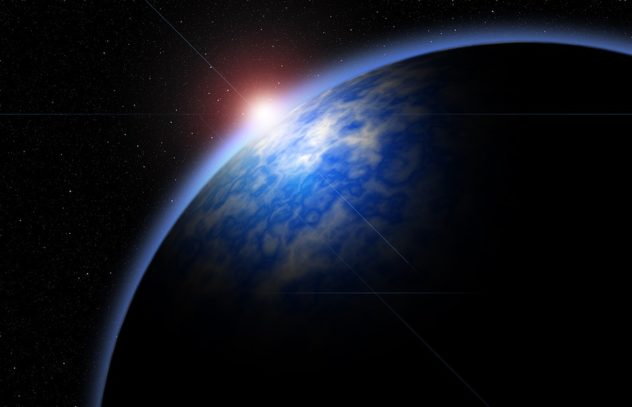Vocabulary:
- primitive /prim-i-tiv/
- astrophysicist /as-troh-fiz-uh-sist/
- geothermal /jee-oh-thur-muh-l/
- hostile /hos-tl/
- anticipate /an-tis-uh-peyt/
[adjective] relating to the character of an early stage in the evolutionary or historical development of something
The students saw portraits of primitive communities in the 1700’s at the museum.
[noun] someone who studies astrophysics
The astrophysicist explained about the discovery of the new planet.
[adjective] of or connected with the heat inside the earth
The icy surface wasn’t a problem anymore because of the geothermal activity happening underneath it.
[adjective] unpleasant or not suitable for living or growing
The planet is known as hostile due to its freezing temperature.
[verb] to imagine or expect that something will happen
Scientists are anticipating for good results of their experiment.
Barnard-b (or GJ 699 B), also known as the super-earth rotating around the Barnard Star, could foster primitive lives based on the latest findings of Villanova University’s astrophysicists Edward Guinan and Scott Engle. They had recently discovered that there are hot iron or nickel core and geothermal activity underneath its surface. This was announced at the 233rd meeting of the American Astronomy Society (AAS) last January 10, 2019 in Seattle, Washington.
It was first discovered in November 2018 as an icy desert; which has a centigrade of minus 170 degrees. It has no signs of water, and only has dim lights from the sun, making it a hostile planet for it will freeze any living organism. But the detection of high levels of geothermal heating happening underneath its icy surface makes it a potential ‘life zone’ for simple alien lives. Researchers are still anticipating for future large telescopes, so they can have further observations about its habitability.
It was first discovered in November 2018 as an icy desert; which has a centigrade of minus 170 degrees. It has no signs of water, and only has dim lights from the sun, making it a hostile planet for it will freeze any living organism. But the detection of high levels of geothermal heating happening underneath its icy surface makes it a potential ‘life zone’ for simple alien lives. Researchers are still anticipating for future large telescopes, so they can have further observations about its habitability.
True or False:
- Barnard-b is a super-earth going around the solar system.
- Astrophysicists Guinan and Engle were from Villanova University.
- They had recently discovered that there are hot iron or nickel core and geothermal activity above Barnard-b’s surface.
- Its temperature is minus 170 degrees celsius.
- Researchers still can’t make further observations because they don’t have large telescopes yet.
Discussion Questions:
- What is your opinion about Planet Barnard-b being a new home to aliens?
- How do you think the tidal heating help on making Barnard-b potential to be a livable planet?
- Do you think that there are already extraterrestrials living among us? Please explain your answer.
- Do you like the idea of aliens living with humans on earth? Why or why not?
- Is there a possibility that humans can also live on another planet? Why do you think so?
Express Your Opinion:
- “I believe alien life is quite common in the universe, although intelligent life is less so. Some say it has yet to appear in Earth.” – Stephen Hawking
- “Ultimately, what we’re looking for in the long run is to find other Earth-like planets.”- Debra Fischer
- “I believe in aliens. I think it would be way too selfish of us as mankind to believe we are the only lifeforms in the universe.” – Demi Lovato
